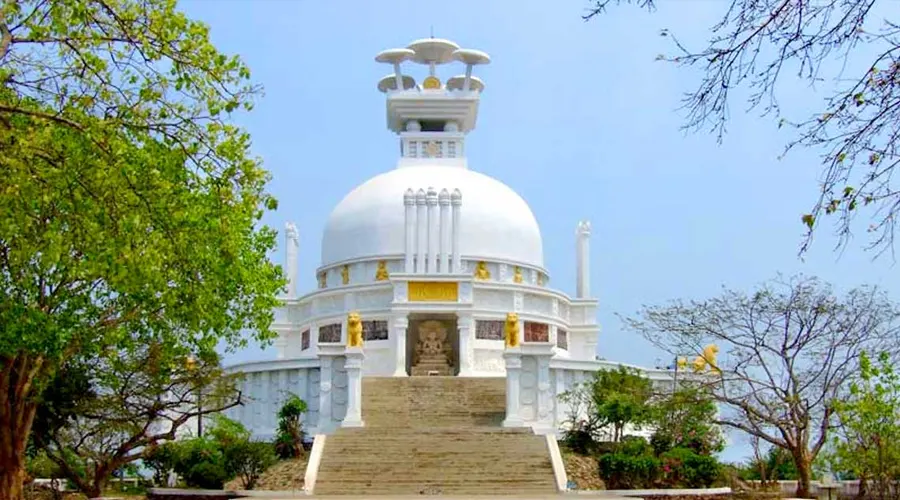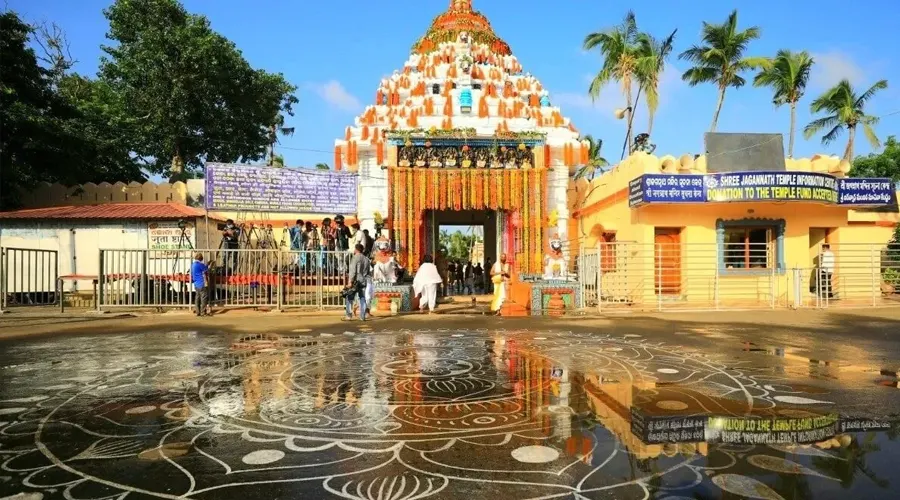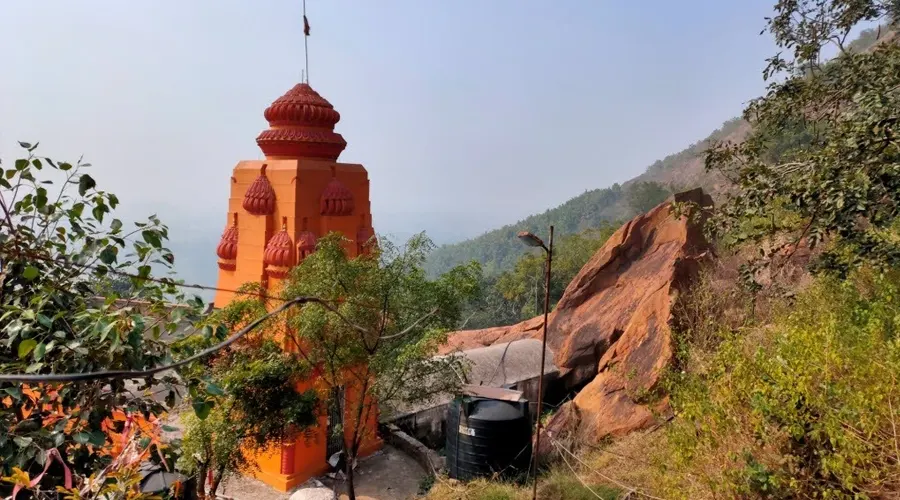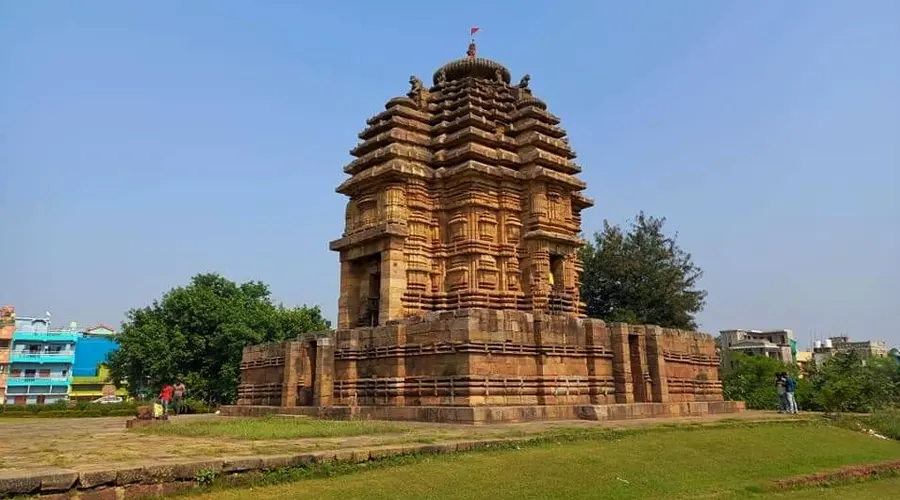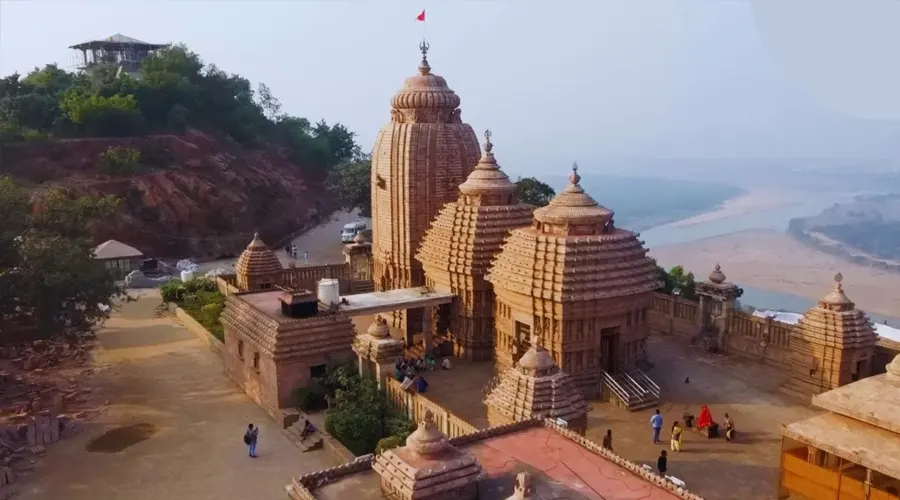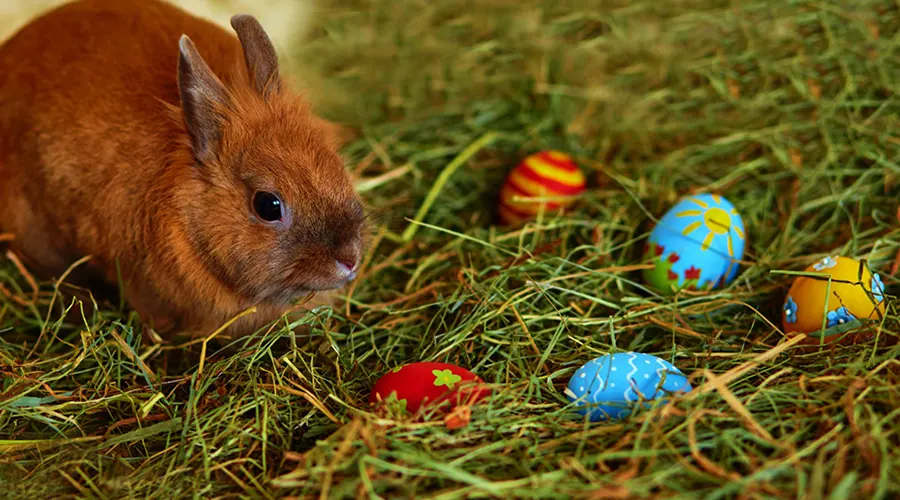Dhauli Shanti Stupa
Shanti Stupa of Dhauligiri is also known as the Peace Pagoda. Dhauligiri lies at a distance of 7 Km from Bhubaneswar. As one travels from Bhubaneswar to Puri, one finds Shanti Stupa. The word 'Shanti' in the name itself suggests peace. Since King Ashoka adopted the path of peace and tranquility and resorted to Buddhism, he laid the foundation of Dhauligiri Shanti Stupa at a place which is known for the end of the Kalinga War. Here, one finds the edict of Lord Buddha which is visited by numerous Buddhist devotees.
The construction of the Shanti Stupa of Dhauligiri was assisted by Fuji Guruji and therefore, the place became a place of devotion and worship for various people belonging to different generations. One can also spot some stupas, chaityas as well as pillars whose foundation was laid by King Ashoka.
There also exist several edicts that display King Ashoka's intention to promote joy, peace, and contentment all through the world. And over the edicts, you come across a rock-cut elephant that is considered to be the earliest Buddhist sculpture in Orissa.
The overall structure of the stupa is in the shape of a dome. One can spot the Buddha footprints as well as the Bodhi tree over the stone panels. Over the panels, one also spots the image of Ashoka who keeps his sword of war in front of Lord Buddha suggesting that he had given up the idea of war completely.
In the vicinity of this stupa, there lays a monastery named the Saddharma Vihar Monastery, which is much visited by Buddhist devotees. At a short distance from the Shanti Stupa, you find the temple of Dhavaleshwar which was renovated in the year 1972 and is much frequented by Hindu as well as Buddhist devotees. Therefore, make it a point to visit Dhauligiri and explore various Buddhist attractions that add to the sacred significance of Dhauligiri in Orissa.
History of Dhauli Shanti Stupa
The Dhauli Shanti Stupa, located on the banks of the Daya River in Bhubaneswar, Odisha, is a symbol of peace and a historical monument that reflects the legacy of Buddhism in India. The site is considered significant as it is believed to be the place where Emperor Ashoka waged the Kalinga War in 262 B.C., which led to his transformation and adoption of Buddhism.
After witnessing the bloodshed of the Kalinga War, Ashoka embraced Buddhism and decided to spread the message of peace and non-violence. In remembrance of this important event, the Dhauli Shanti Stupa, also known as the Peace Pagoda, was built in 1972 by the Kalinga Nippon Buddha Sangha and the Japan Buddha Sangha. The pagoda is decorated with edicts of Ashoka and intricate carvings that depict the emperor's life after the war.
Architecture of Dhauli Shanti Stupa
The construction of the Shanti Stupa of Dhauligiri was assisted by Fuji Guruji and therefore, the place became a place of devotion and worship for various people belonging to different generations. One can also spot several stupas, chaityas as well as pillars whose foundation was laid by King Ashoka.
There also exist several edicts that display King Ashoka's intention to promote joy, peace, and contentment all through the world. And over the edicts, you come across a rock-cut elephant that is considered to be the earliest Buddhist sculpture in Orissa.
The overall structure of the stupa is in the shape of a dome. One can spot the Buddha footprints as well as the Bodhi tree over the stone panels. Over the panels, one also spots the image of Ashoka who keeps his sword of war in front of Lord Buddha suggesting that he had given up the idea of war completely.
In the vicinity of this stupa, there lays a monastery named the Saddharma Vihar Monastery, which is much visited by Buddhist devotees. At a short distance from the Shanti Stupa, you find the temple of Dhavaleshwar which was renovated in the year 1972 and is much frequented by Hindu as well as Buddhist devotees. Therefore, make it a point to visit Dhauligiri and explore various Buddhist attractions that add to the sacred significance of Dhauligiri in Orissa.

